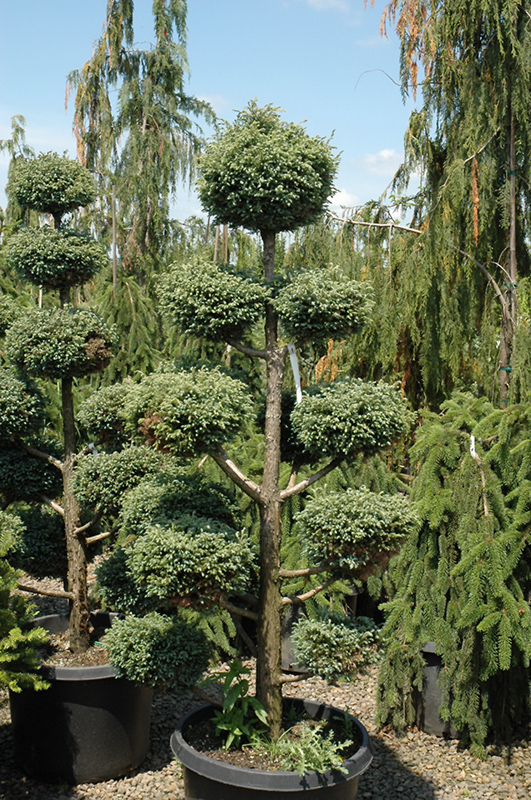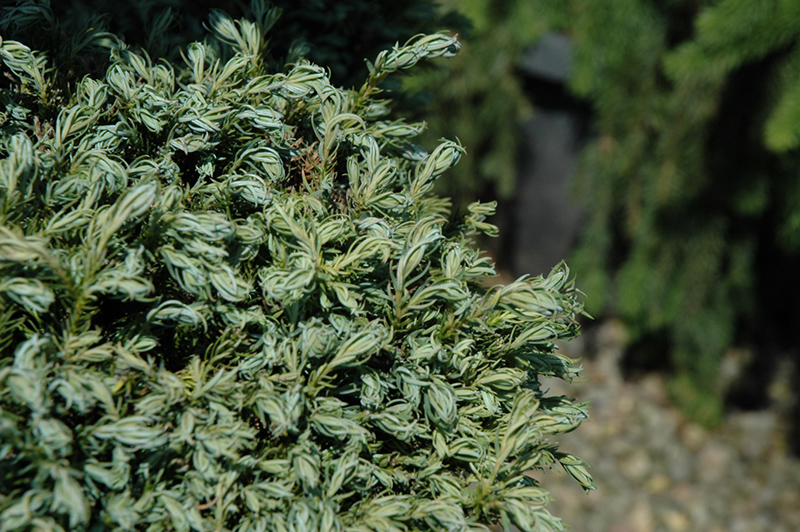>> Home
Cyano-Viridis Poodle Form Falsecypress
Chamaecyparis pisifera 'Cyano-Viridis (poodle)'
Height: 8 feet
Spread: 4 feet
Sunlight:
![]()
![]()
Hardiness Zone: 4
Other Names: Boulevard Blue Cypress, Japanese Falsecypress
Description:
Poodle form topiary; one of the most versatile evergreens, with countless cultivars in all shapes and sizes; the species is a typical spire-shaped evergreen with fine-textured foliage and interesting fibrous reddish bark
Ornamental Features
Cyano-Viridis Poodle Form Falsecypress is a dwarf conifer which is primarily valued in the landscape or garden for its highly ornamental lollipop-like shape. It has attractive steel blue foliage with silver stripes. The scale-like sprays of foliage are highly ornamental and remain steel blue throughout the winter. The shaggy antique red bark adds an interesting dimension to the landscape.
Landscape Attributes
Cyano-Viridis Poodle Form Falsecypress is a multi-stemmed evergreen shrub, selected and trained to grow in a small tree-like form with the primary plant grafted high atop a standard. It lends an extremely fine and delicate texture to the landscape composition which can make it a great accent feature on this basis alone.
This is a relatively low maintenance shrub. When pruning is necessary, it is recommended to only trim back the new growth of the current season, other than to remove any dieback. It has no significant negative characteristics.
Cyano-Viridis Poodle Form Falsecypress is recommended for the following landscape applications;
- Accent
- Vertical Accent
- General Garden Use
Planting & Growing
Cyano-Viridis Poodle Form Falsecypress will grow to be about 8 feet tall at maturity, with a spread of 4 feet. It has a low canopy with a typical clearance of 1 foot from the ground, and is suitable for planting under power lines. It grows at a medium rate, and under ideal conditions can be expected to live for 70 years or more.
This shrub does best in full sun to partial shade. It prefers to grow in average to moist conditions, and shouldn't be allowed to dry out. It may require supplemental watering during periods of drought or extended heat. It is not particular as to soil type, but has a definite preference for acidic soils. It is highly tolerant of urban pollution and will even thrive in inner city environments. Consider applying a thick mulch around the root zone in winter to protect it in exposed locations or colder microclimates. This is a selected variety of a species not originally from North America.

